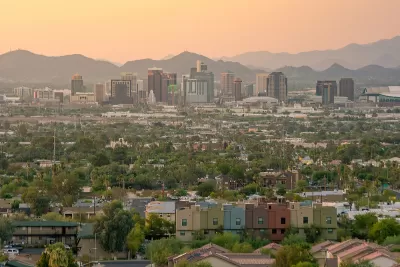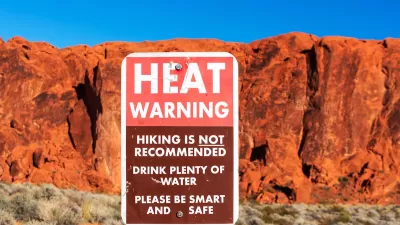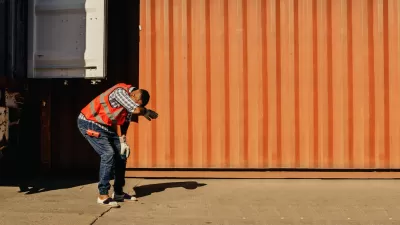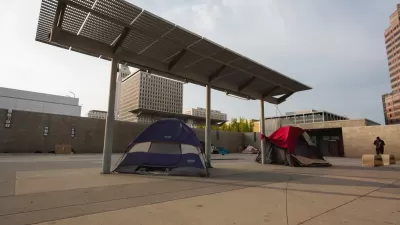Without a standard for recording and classifying heat-related deaths, experts believe the scale of the problem is much bigger than numbers let on.

As this summer's heat waves showed, extreme weather can take a deadly–and costly–toll on communities and infrastructure not prepared to handle rising temperatures. As Chloe Jones and Cresencio Rodriguez-Delgado write, "[h]eat-related deaths are a growing concern for anyone exposed to the elements for long periods of time, or whose health conditions or age make them particularly at-risk in extreme weather conditions, as climate change intensifies temperatures." However, "[t]here isn’t a standard in how to record, count or classify" heat deaths, making it difficult to understand the scope of the problem.
"Deaths from the heat are not always reported as such and experts say many are undercounted or misclassified." Medically, "[t]he only way to accurately know whether someone died of heat or if their death was related to heat is if their body temperature is taken right before or immediately after their death." For people like farm workers, who are twenty times more likely to die from heat stress than other occupations, "[i]t is nearly impossible to understand the gravity and impact heat has on deaths, especially for people who work outdoors, without accurate data."
"If the scale of the problem isn’t known, it is difficult to roll out effective mitigation measures. Accurate data would potentially be able to push states and local jurisdictions toward addressing heat-related deaths more head-on, especially as temperatures continue to rise with climate change."
FULL STORY: We don’t know exactly how many people are dying from heat — here’s why

Planetizen Federal Action Tracker
A weekly monitor of how Trump’s orders and actions are impacting planners and planning in America.

Congressman Proposes Bill to Rename DC Metro “Trump Train”
The Make Autorail Great Again Act would withhold federal funding to the system until the Washington Metropolitan Area Transit Authority (WMATA), rebrands as the Washington Metropolitan Authority for Greater Access (WMAGA).

The Simple Legislative Tool Transforming Vacant Downtowns
In California, Michigan and Georgia, an easy win is bringing dollars — and delight — back to city centers.

The States Losing Rural Delivery Rooms at an Alarming Pace
In some states, as few as 9% of rural hospitals still deliver babies. As a result, rising pre-term births, no adequate pre-term care and "harrowing" close calls are a growing reality.

The Small South Asian Republic Going all in on EVs
Thanks to one simple policy change less than five years ago, 65% of new cars in this Himalayan country are now electric.

DC Backpedals on Bike Lane Protection, Swaps Barriers for Paint
Citing aesthetic concerns, the city is removing the concrete barriers and flexposts that once separated Arizona Avenue cyclists from motor vehicles.
Urban Design for Planners 1: Software Tools
This six-course series explores essential urban design concepts using open source software and equips planners with the tools they need to participate fully in the urban design process.
Planning for Universal Design
Learn the tools for implementing Universal Design in planning regulations.
Smith Gee Studio
City of Charlotte
City of Camden Redevelopment Agency
City of Astoria
Transportation Research & Education Center (TREC) at Portland State University
US High Speed Rail Association
City of Camden Redevelopment Agency
Municipality of Princeton (NJ)





























